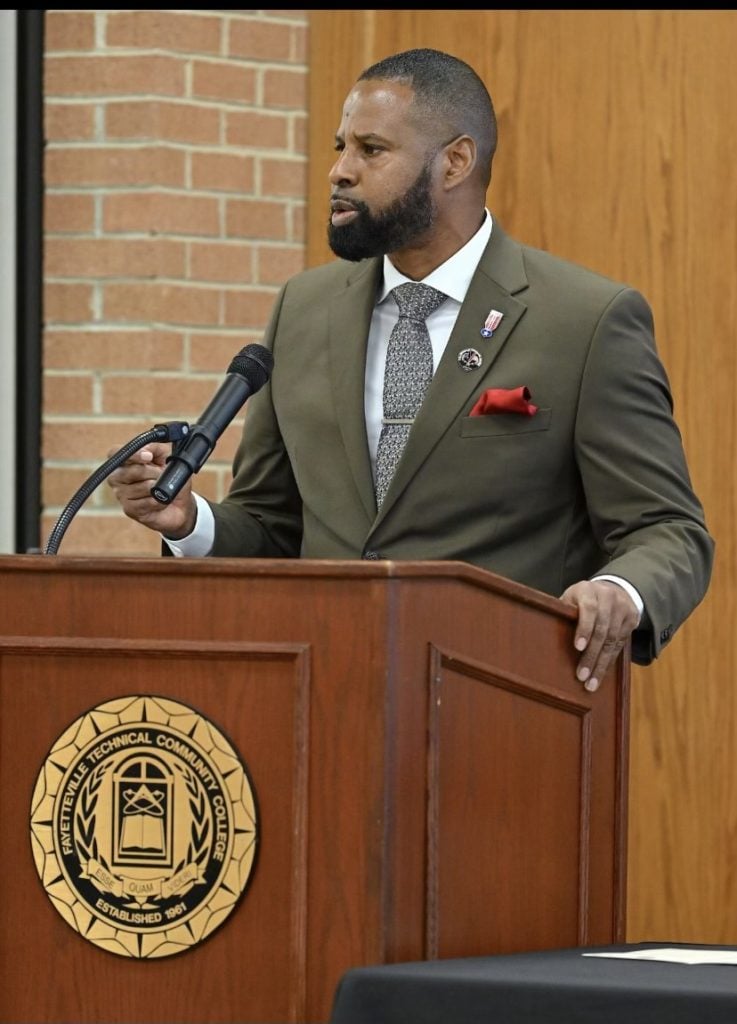Army Veteran Eases the Transition to Civilian Life
Retired Command Sergeant Major Al Lampkins knows a thing or two about service. After 31 years in the Army, Lampkins is now the Sandhills Region Community Network Director at Veterans Bridge Home (VBH) in North Carolina. There, veteran homelessness and food insecurity are among the prevailing issues. VBH ensures veterans and military families are connected with vital resources and with the local community, so they can thrive in any state of transitioning to civilian life.
Lampkins sees himself as a servant of “the greatest country on the face of this earth.” He explains that “to help our service members transition to civilian life fits right into what I love.”

Originally from Upstate New York, Lampkins spent 16 years of his Army career at Fort Bragg near Fayetteville, NC. His decision to settle down in the area after leaving service was a natural one. He anticipated taking a year off before joining the civilian workforce. His spirit of servitude outweighed his desire for downtime.
“I had an idea of the things I wanted to do once I went into the workforce,” he says. “As far as transitioning, it wasn’t as volatile as what others had been through. I think the work I put in on the back end of my career prepared me for the transition back into the civilian sector.” After six months, he began working with the North Carolina Department of Commerce. There he helped veterans access state benefits and employment opportunities.
Building a Bridge Home for Veterans Everywhere
It was during this transition when Lampkins learned of all the organizations dedicated to supporting veterans.
“Outside the gates of our Army bases… all of these organizations are standing ready help transition[ing] service members,” Lampkins says as an explanation for why he went to work with VBH. Based in Charlotte, VBH operates in four regions across North Carolina and is currently expanding its reach into South Carolina.
In addition to its geographic reach, VBH is expanding its focus areas beyond assisting service member transition and helping veterans find housing, addressing food insecurity, and connecting veterans to mental health services to help combat veteran suicide. Through their network of partners, VBH helps veterans navigate employment, create social connections, settle their families. The organization connects veterans to the resources needed to be successful and thriving leaders in the community.
Lampkins shares a recent instance where a military family was caught in a desperate situation – and how VBH lent an immediate helping hand.
A Navy veteran, along with his fiancée and their young child, found themselves unhoused after moving to the Fort Bragg area. “We were able to quickly help find an apartment for that veteran and his family. We helped them pay the security deposit, and we helped connect them to resources to help furnish their home,” Lampkins explains.
The VBH team also helped this veteran file for his disability status with the VA. They also helped create his resume – ultimately leading to him securing a job at a local medical center.
Offering Help to Veterans, Service Members, Their Families
Lampkins tells us the VBH motto is to support “‘the right veteran at the right time, in the least amount of time.’ We were able to assist that veteran with not just housing, but with employment, his disability, and medical. That all goes back to building one healthy community.”
Lampkins wants veterans everywhere to know that there is help available – resources, community, organizations, and fellow veterans – all willing to extend an olive branch. And these services continue to grow. Recently, while giving a presentation, a veteran stood up to commend how far these services and resources had come since she had transitioned to civilian life in the 1990s.
“She described a story of how frightened she was. This veteran didn’t know where she and her child were going to live,” Lampkins recounts. “She said ‘now that I look at the resources offered to service members, I wish I had what’s available today.’ What I want to tell service members is that there is help.
“We’ve come a long way. We still have a ways to go – but I’m proud of the success we’re seeing.”









